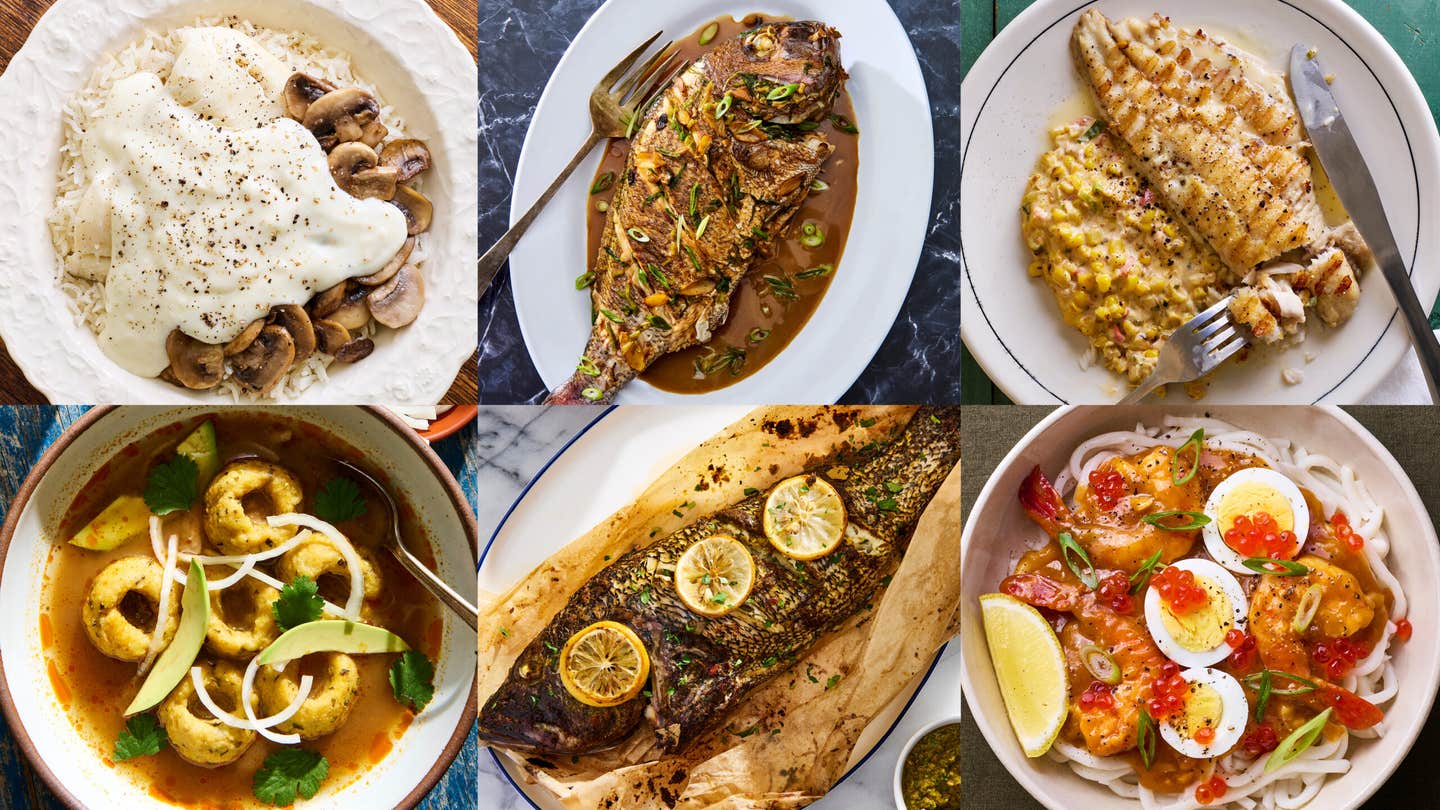
Fish Friday Around the World
Six chefs show us what they’re cooking for Lent and beyond, from Cajun grilled catfish to Chinese red-braised snapper.
The Pope didn’t invent Fish Fridays. But the practice did grow out of a tradition of fasting during the Middle Ages, when the Christian calendar was crammed with holy days requiring keepers of the faith to avoid eating meat, or three square meals altogether. Since then, the Catholic Church–as well as adjacent Christian faiths–have certainly spread the gospel about eating fish at the end of the week, leading to a multitude of fish-and-chip shops in the U.K. and annual firehall dinners in the Midwest. And it’s not all fried. In Jamaica, the most popular Easter week dish is an escovitch of king fish or snapper. Cape Town favors pickled fish curry with a side of hot cross buns. The Spanish introduced dried and salted cod to Ecuador, where it was added to fanesca, an indigenous vegetable soup, which is now almost exclusively reserved for meals during Lenten week.
And then there are the special dispensations. In Louisiana, Cajuns have been known to argue whether the fried alligator bites at Middendorf’s count as fish after Mardi Gras. Last year, Boston’s Archbishop Seán Patrick O'Malley granted a Hail Mary for corned beef when the Feast of St. Patrick fell on a Friday during Lent. Other historical exceptions have included capybara in Venezuela, muskrat in Michigan, and beaver in Quebec. (To be fair, rodentia are pretty much off the menu these days.) We also have Fish Fridays to thank for the invention of McDonald’s Filet-O-Fish in 1962. (There’s a tempting joke to be made here about fasting for Lent and fast-food chain fish sandwiches, but we really don’t have to go there.)
Here are dishes from six chefs and cookbook authors around the world who celebrate the end of the week with their own fish traditions.
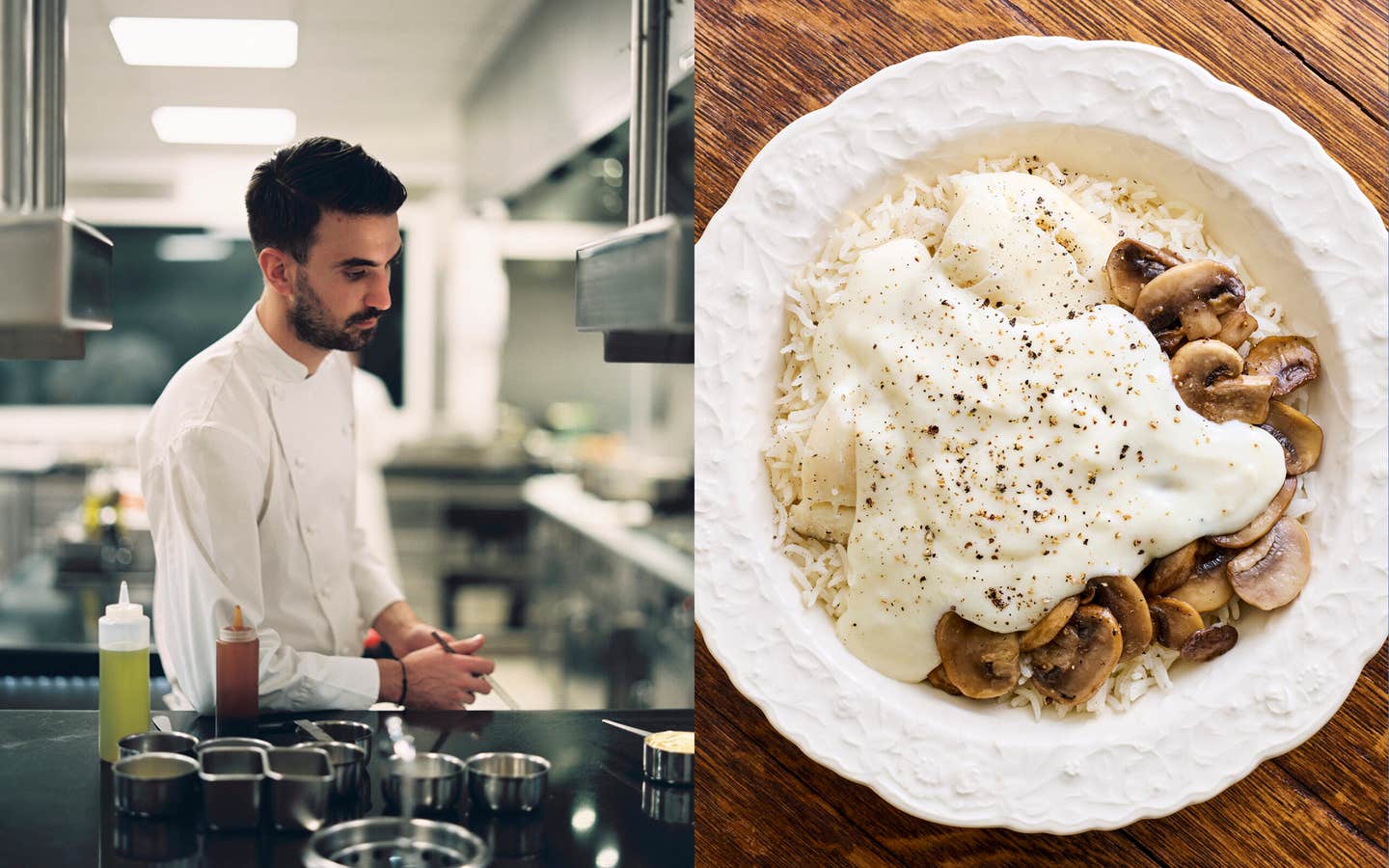
Amaury Bouhours
Chef, Restaurant Le Meurice, Paris, France
“This dish is an accommodation for fish on Fridays,” says chef Amaury Bouhours, who oversees a palatial dining room in Paris, but remains rooted in cuisine de grand-mère, the simpler meals he learned from his 88-year-old grandmother, Simone. During Lent, Simone prepares a weekly fish dinner smothered in a creamy sauce with a distinct hint of nutmeg, at her home in Issy-les-Moulineaux, a suburb southwest of the city. A traditional blanquette, or white ragoût, usually accompanies veal or lamb, but her version is adapted for fasting days. Madame Bouhours pairs pollock and steamed rice with champignon de Paris, a variety of white button mushroom reportedly first cultivated at Versailles during the reign of Louis XIV in the 17th century. The fillets are poached in a steamer basket or on a rack inserted above a “fait tout,” the everyday saucepan found in most French kitchens. “For my grandmother, rice is rice,” says Bouhours. “But I prefer basmati, because it blends well with the blanquette.” While the adults serve themselves from family-style platters at the table, Bouhours recalls that, during childhood, he and his brother mashed all the ingredients into a comforting porridge, even though “it doesn’t make the best presentation. But I still crave it this way.”
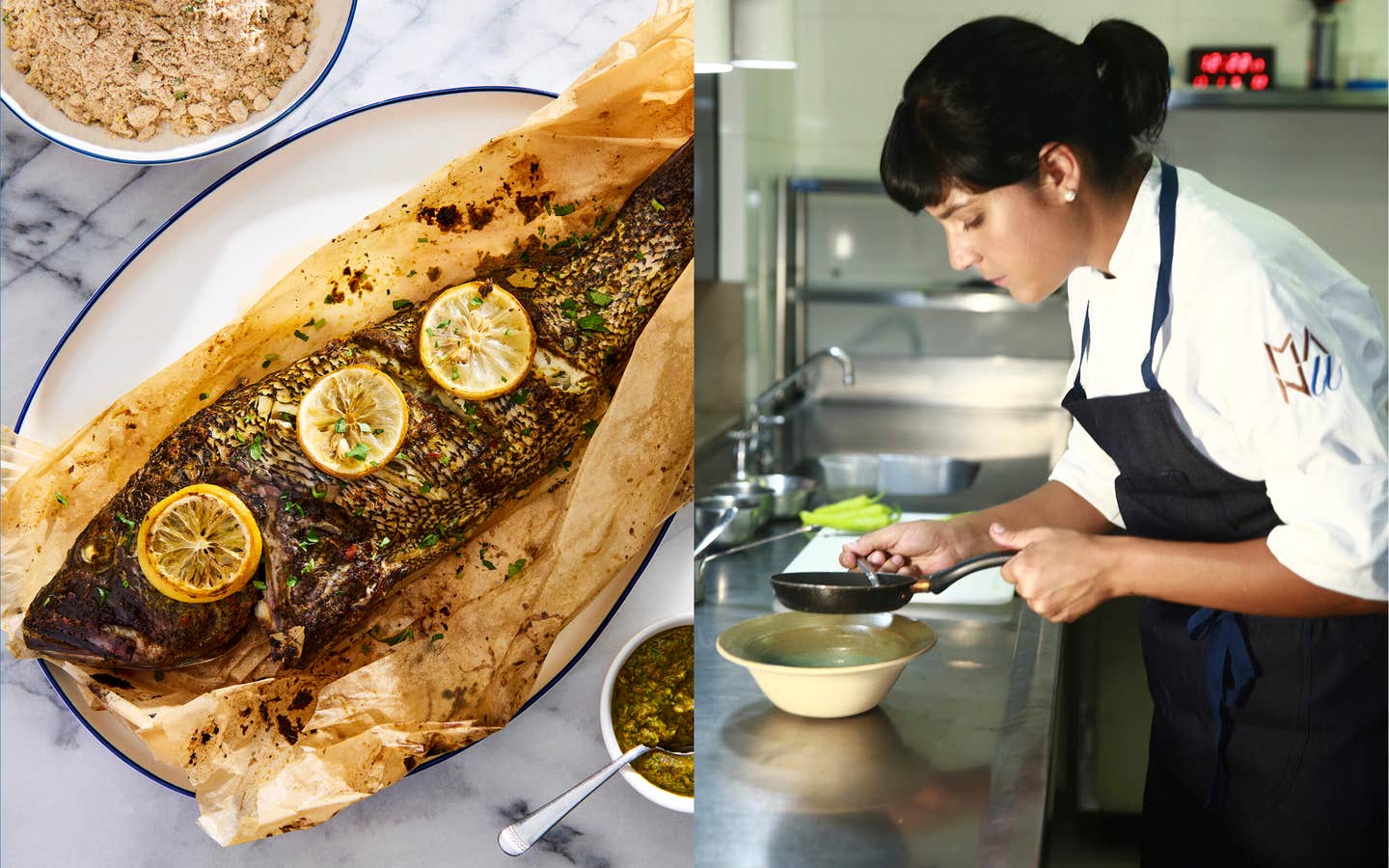
Manoella “Manu” Buffara Ramos
Chef, Restaurante Manu, Curitiba, Brazil
Chef Manoella Buffara Ramos has an affectionate nickname, which she gave to her eponymous restaurant, Manu, in the southern Brazil city of Curitiba. She cooks for five tables a night, offering a plant-focused tasting menu that high-flying dinner guests cross oceans to eat. But she also belongs to Mulheres do Bem, a group of women chefs who prepare weekly lunches for houseless individuals. The mother of two young daughters, Buffara sources sea bass from coastal Brazil when she cooks for them at home. “This recipe holds a special place in our family, especially during the Lenten season,” she says. “My mother has always had a deep connection to the sea, tracing back to the years her family spent in Paranaguá, a coastal town in our state. As a result, fish dishes like this one are a staple in our household.”
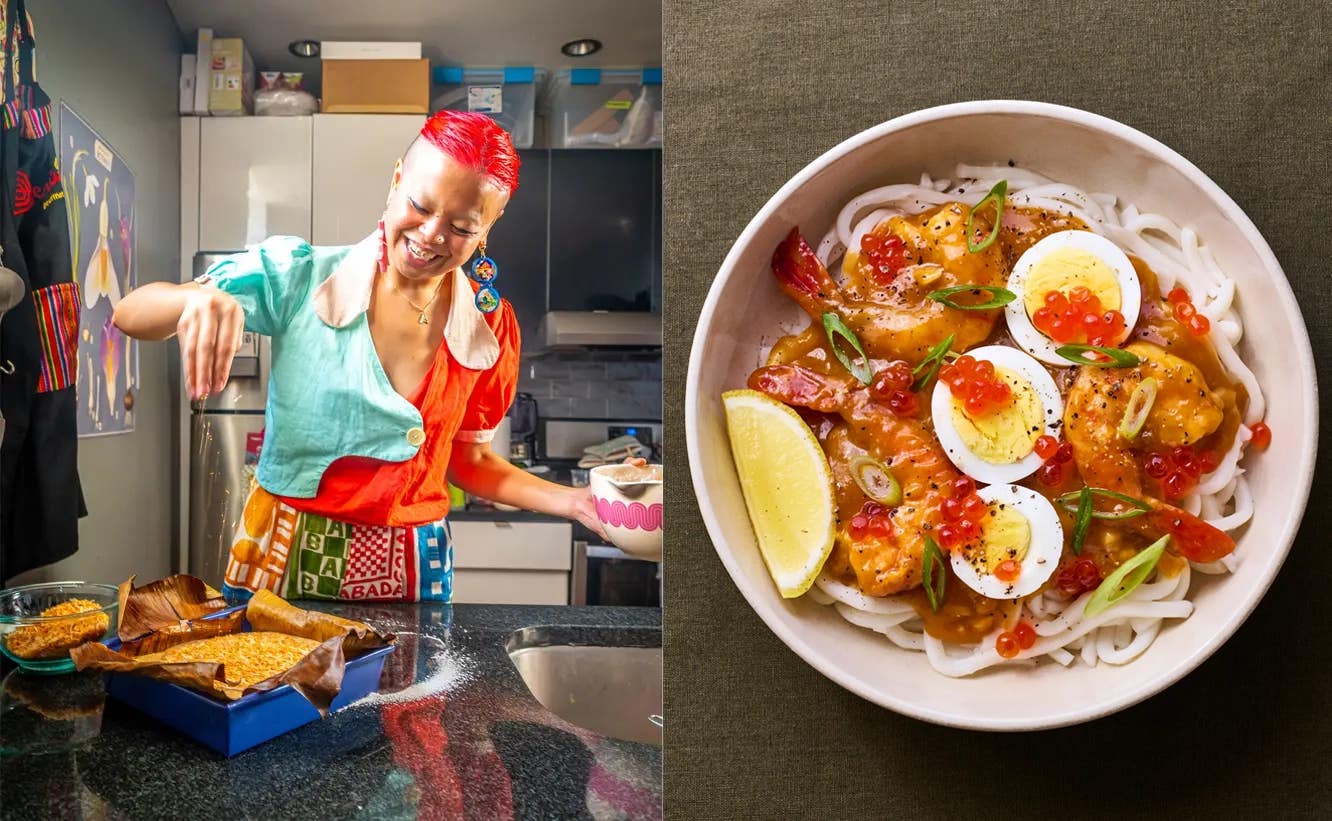
Abi Balingit
Author, Mayumu: Filipino American Desserts Remixed, Brooklyn, New York
Abi Balingit grew up eating pancit palabok, a Filipino noodle dish with a luscious shrimp sauce, at family celebrations. “This dish is meant to be shared with a lot of people. My auntie’s palabok was perfectly savory and super fragrant, with a fishiness I looked forward to smelling. She lived in SoCal, and we’d go visit, a six-hour drive from Stockton, on special occasions.” Balingit is better known for her inventive take on Filipino American desserts, and while baking remains her biggest passion, she recently started tinkering with favorite childhood dishes in her Brooklyn apartment. “Traditionally, palabok is made with thin rice noodles, but I love the chew and texture that you get from thicker udon. Adding salmon roe is like popping boba.” Her version is also topped with crunchy chili-lime chicharrones. “I grew up very Catholic. So on Fish Fridays, I’ll serve this for a party, but leave off the pork.”
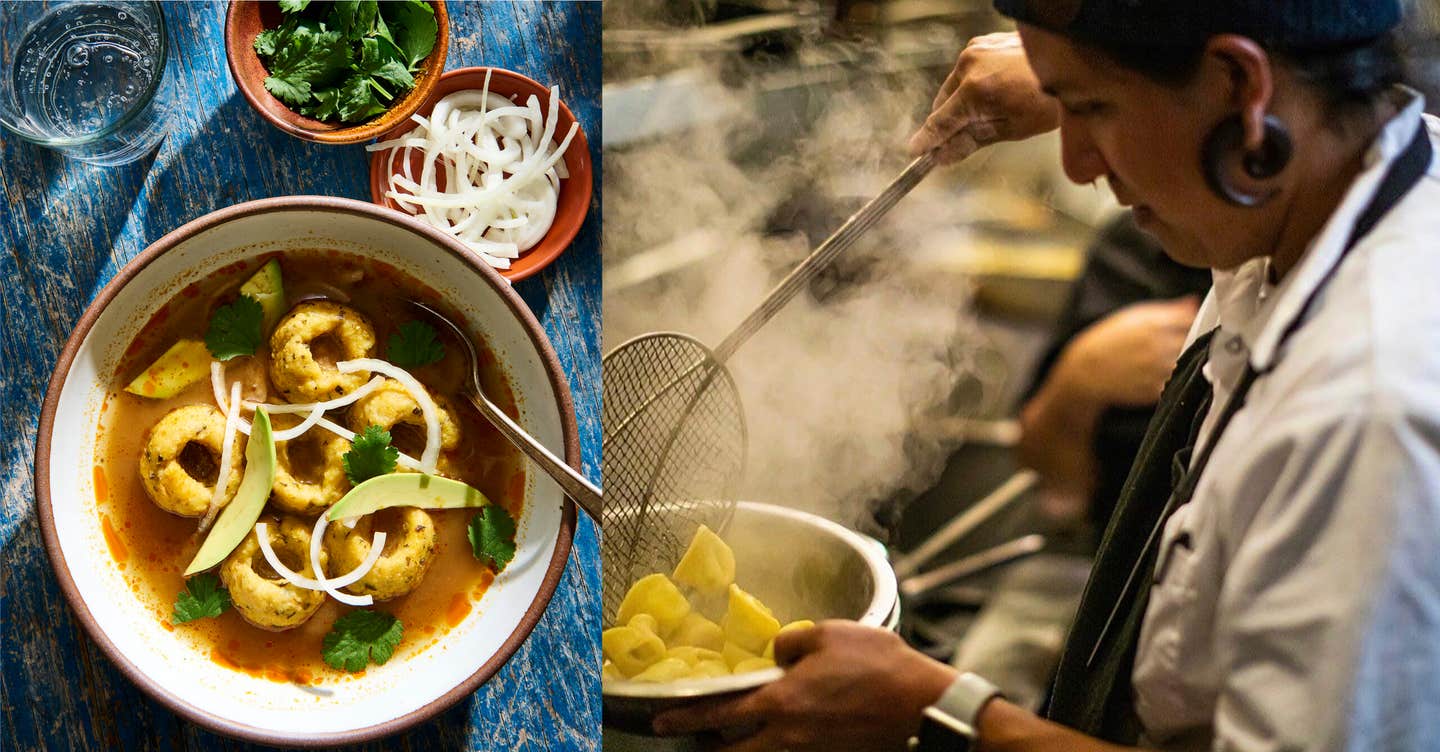
Obed Vallejo
Chef, Maíz de la Vida, Nashville, Tennessee
Born in Yucatán, chef Obed Vallejo moved to Florida as a kid. His grandfather had a cattle ranch there, so he dreamed of being a cowboy, but seafood has remained a favorite family meal. (Not surprisingly, he’s in charge of developing the fish program at Maíz de la Vida in Nashville.) “My parents were Seventh Day Adventists, so they did fish on Friday, usually something brothy to start the Sabbath, a special once-a-week meal.” His mother, Beatriz Contreras Xan, was a frugal cook, but could work magic with modest ingredients, creating a soup out of nothing more than tilapia heads and bones. “This was a struggle meal,” he says. “It represents to me that even though we didn’t have a whole fish, my mother was in effect making fumet [concentrated fish stock], literally taking trash and turning it into something beautiful.” Vallejo stays true to what his mother taught, and pairs his broth with traditional chochoyotes (dumplings) of fried fish bones crushed to a paste and mixed with masa. “If you don’t like fried bones, you’re missing out.”
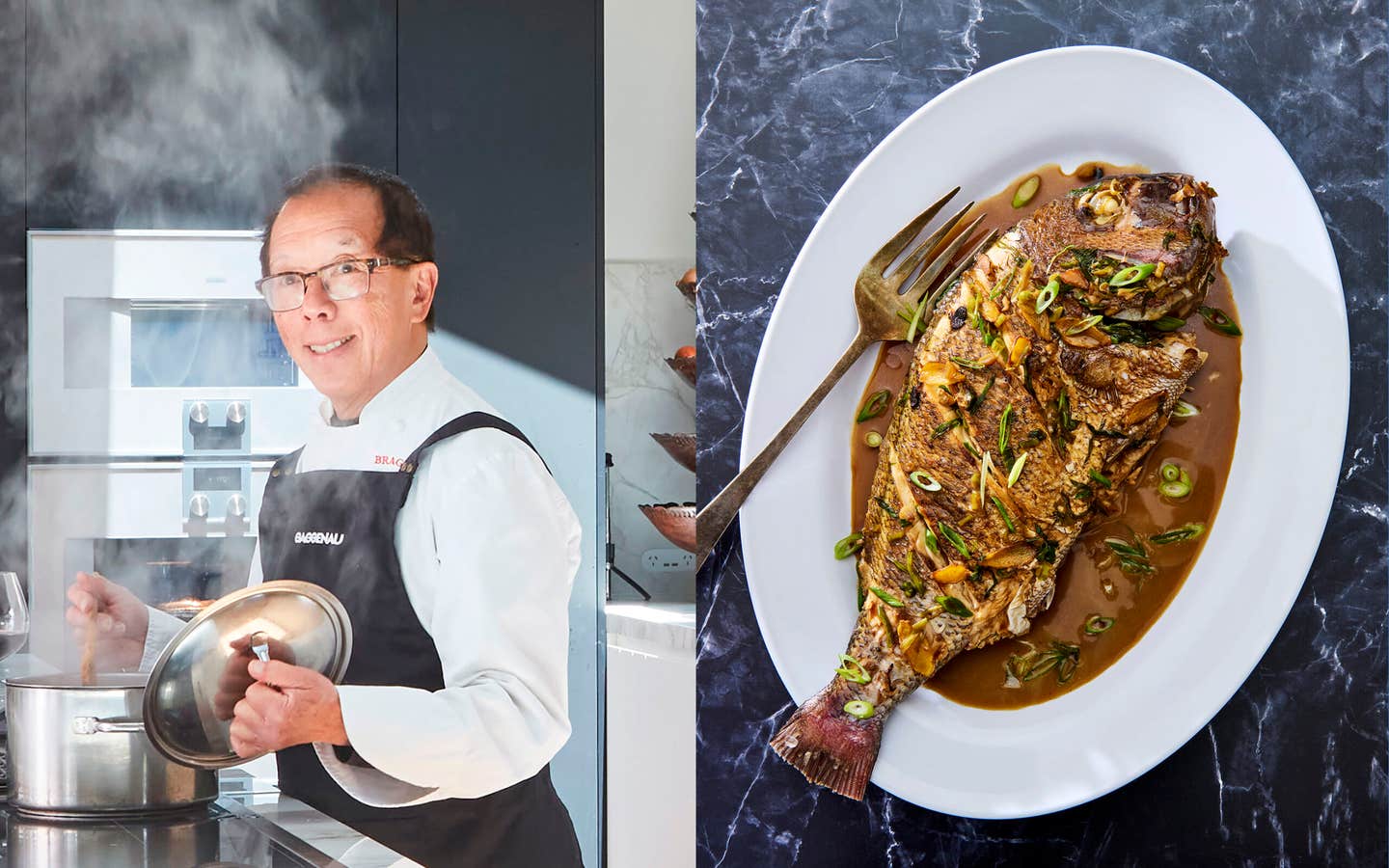
Tony Tan
Author, Hong Kong Food City, Melbourne, Australia
One of Australia’s revered experts on Southeast Asian cooking, Tony Tan says he grew up in Pahang, Malaysia with a healthy dose of Catholic guilt. “Eating fish on Friday only came into being when I was baptized at Catholic school. My parents were Buddhists with Taoist elements thrown in for good measure. They didn’t quite get me, but went along with my faith so long as I went along with ancestral worship.” Tan’s mother, Lim Heng Kiow, worked as the cook at one of their family’s group of hotels, which catered to British colonials until Malaysia gained independence in 1957. He remembers the dishes she prepared for both guests and family, including a spice-infused meen molee, or fish curry, introduced from Kerala. “She used to call it woo molee, because woo means fish in Hainanese.” One of his Friday favorites, which he still prepares at his cooking school in a suburb of Melbourne, is her cinnamon and anise-infused hong shao yu, whole fish braised in a red sauce. “As an eight-year-old, I couldn’t connect why we could eat fish but not meat. My godparents told me it was a form of penance for the sins we commit. But in all honesty, eating fish, in my opinion, was delicious. What is the sin in this?”
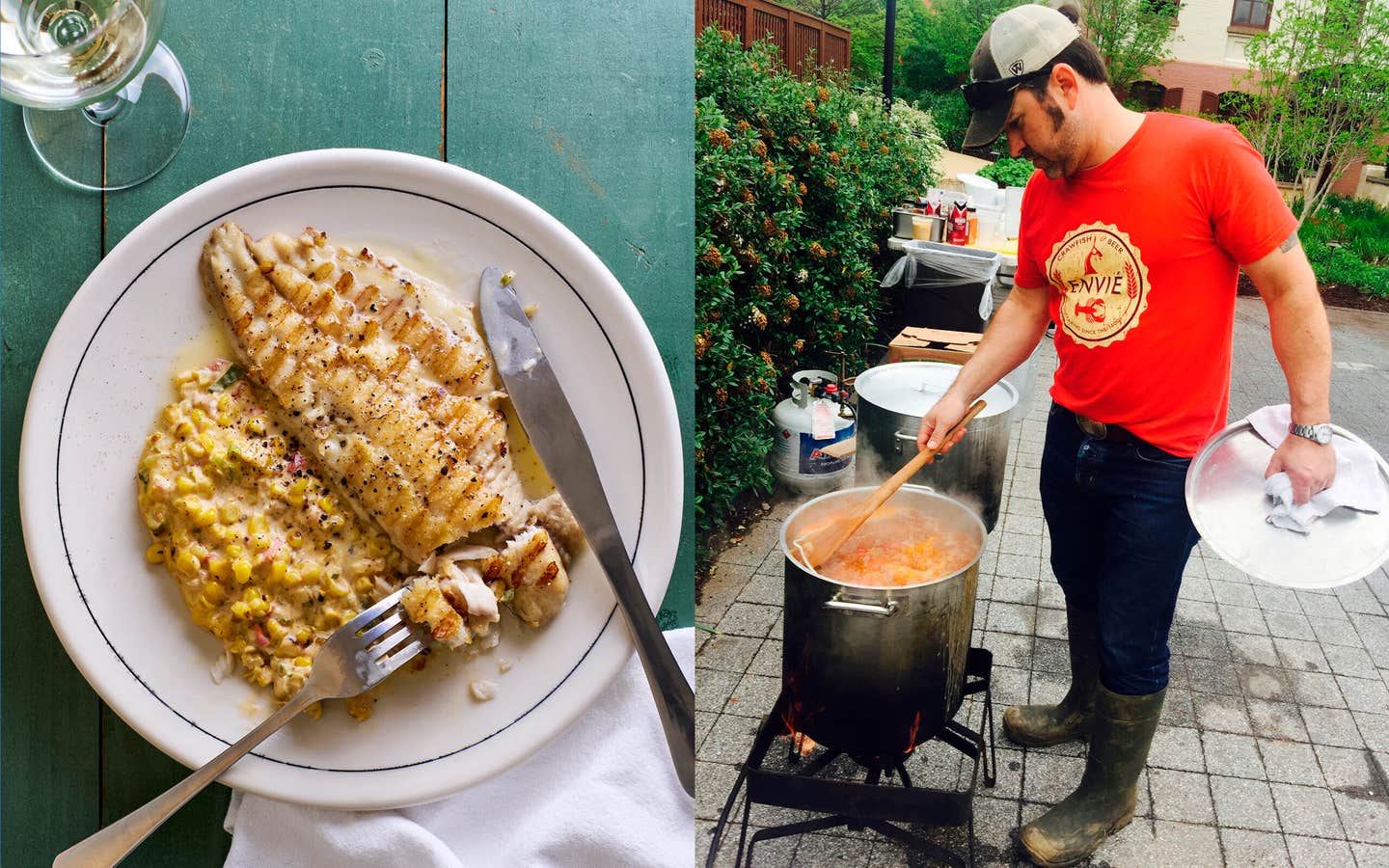
David Guas
Chef, Bayou Bakery, Arlington, Virginia
When he was 10 years old, chef David Guas was given an Ugly Stik fishing rod, and at every chance, he sneaked off to drop a line in Lake Willow, just outside New Orleans, where he used grass shrimp as bait for bass, and day-old Bunny Bread for perch. “You could put anything on a hook for a perch, and it would bite,” he says. “Bless my mom, as I would come home with 30 perch in a massive bucket probably three times a week. She scaled, cleaned, and took the heads off, then fried them. It was my first real experience harvesting fish and then eating them.” Playing hooky during childhood was the genesis of his advocacy for sustainable seafood, both on the Gulf Coast back home, and now extending to the Chesapeake Bay ecosystem, where he sources wild blue catfish to serve at his restaurant in Northern Virginia. “Blue catfish are an invasive species and incredibly destructive. They taste like blue crab, as that is what they feast on. And what is Maryland known for but their crabs?” Guas, who bakes thousands of king cakes for Mardi Gras, pays homage to his Cajun upbringing when he serves shrimp jambalaya, a crawfish boil, or grilled catfish fillets as Friday specials.
Keep Reading
Continue to Next Story










